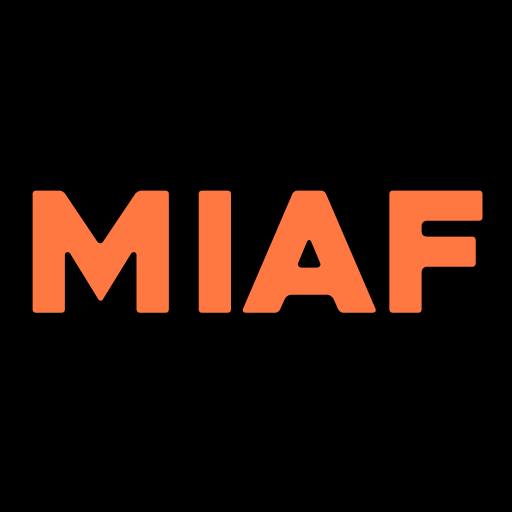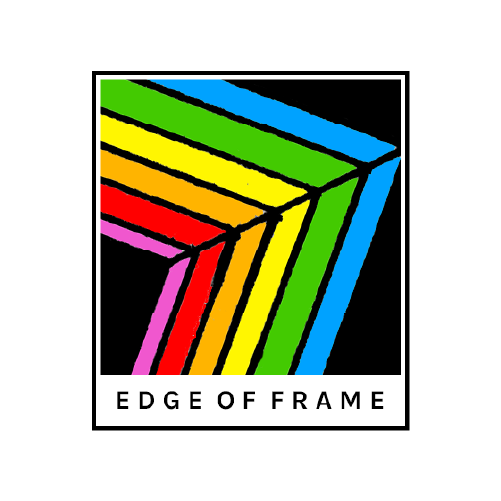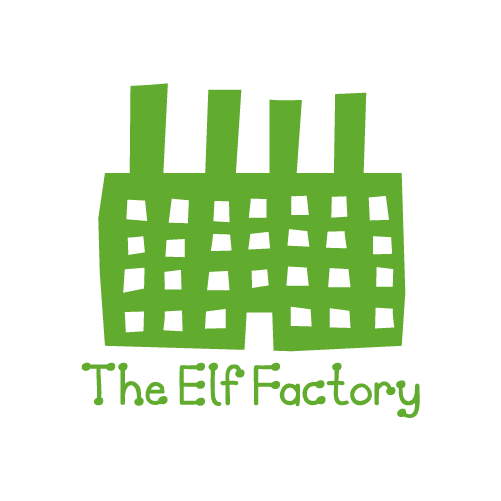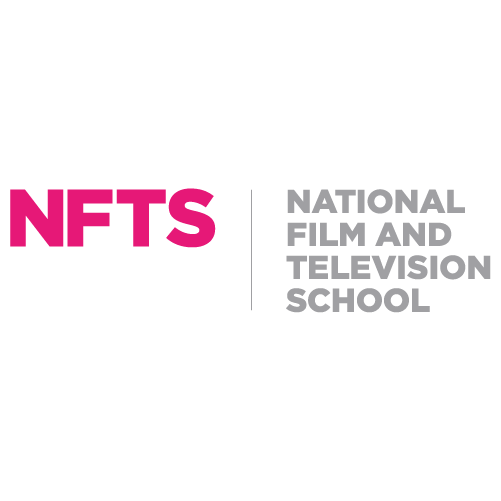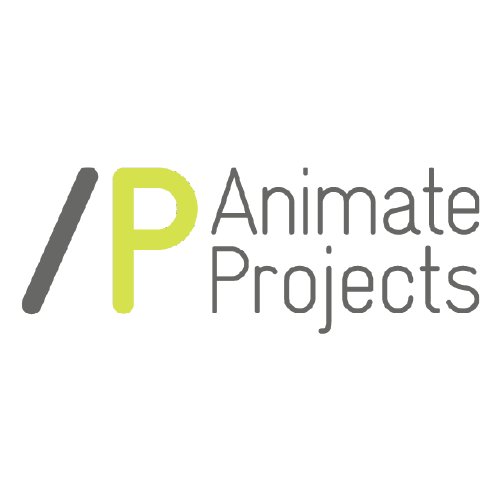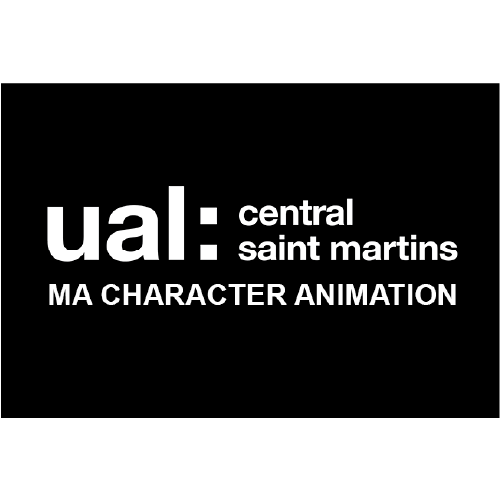We champion animation, be it international or home-grown and our British Showcase is the best place to start for the latter. What follows is the result of a Q&A with each of the filmmakers who have films featuring in our Oct 30th screening. We hope you enjoy…
Find out more about the films in our British Showcase here
At Barbican book tickets here
Emily Howells & Anne Wilkins – Hum
 Emily Howells & Anne Wilkins are a duo based in Manchester. Their first collaboration, A Film about Poo (2009) was self-funded and screened at over fifty international film festivals, winning a total of seven awards, including Best Animation at the BFI Future Film Festival 2010, and Audience Favourite voted for by 8-14 year olds at New York International Children’s Film Festival 2010. Their second film together was commissioned by Bolton Museum & Archives. Spin Spun Span (2010) is an abstract and surreal history of the cotton industry in the North West, focussing on the invention of the spinning mule. The film is part of the permanent collection at Bolton Museum, has screened internationally, and won five awards. Hum is their third collaboration. Between directing films, they do freelance animation for TV and film, teach animation workshops, and produce and illustrate their own zines (and other crafty things) for the illustration collective, Nest.
Emily Howells & Anne Wilkins are a duo based in Manchester. Their first collaboration, A Film about Poo (2009) was self-funded and screened at over fifty international film festivals, winning a total of seven awards, including Best Animation at the BFI Future Film Festival 2010, and Audience Favourite voted for by 8-14 year olds at New York International Children’s Film Festival 2010. Their second film together was commissioned by Bolton Museum & Archives. Spin Spun Span (2010) is an abstract and surreal history of the cotton industry in the North West, focussing on the invention of the spinning mule. The film is part of the permanent collection at Bolton Museum, has screened internationally, and won five awards. Hum is their third collaboration. Between directing films, they do freelance animation for TV and film, teach animation workshops, and produce and illustrate their own zines (and other crafty things) for the illustration collective, Nest.
What made you make the film?
We were inspired by poet and performer Nikky Shafou. She approached us about her multi-platform project Digging Deep. She asked if we would animate a film that was about dreams and a restless nights sleep. The subject matter we thought could be a tricky one as it is so interesting and thus has been done many times before, so we hoped to approach it in a different way. We applied our idea to a brief that came up for experimental films through Vision and Media and Cornerhouse and were lucky enough to receive funding.
Is there something you can tell us about the production process?
We were really interested in sound and worked with our musician Billy Payne from right at the start, making him a series of music compilations that inspired us. We were particularly inspired by Delia Derbyshire and her series about dreams. Billy recorded Nikky performing her play as well as counting and breathing. In the end the final sound edit was stripped down to the most simplest of words, repeated over and over.
Where do you get your ideas from?
In general our short film ideas come from random places, but they are often linked to stories or poems we’ve read or pieces of music. We tend to hang onto our ideas for a long time – and although that can be frustrating, it does mean we spend a long time in pre-production, adding elements and developing ideas.
What are you working on now or planning on working on next?
We have three projects in development at the moment. One is a short musical about a frustrated poet and cockroach named Archy. The second project is about a man named Laurence, who has a toucan named David living in his head. The third project is a follow-up of sorts to our first short, A Film about Poo; it’s a collection of stories, songs and random jibber jabber about menstruation, and it’s called Periodicals.
Luiz Lafayette Stockler – Montenegro
 Luiz Lafayette Stockler makes films, drawings, poems and songs. He was born in Brazil, grew up in Wales and now lives in London. In 2010, he graduated from the University of Wales, Newport where he made his graduation film Vovô, which was screened in over 20 countries, winning a Royal Television Society award for ‘Best Animation’. In 2011 he began an MA in Animation at the Royal College of Art. His first year film Home, was screened at Slamdance in 2013 and also on Channel 4 as part of Random Acts. Montenegro is his graduation film from the RCA.
Luiz Lafayette Stockler makes films, drawings, poems and songs. He was born in Brazil, grew up in Wales and now lives in London. In 2010, he graduated from the University of Wales, Newport where he made his graduation film Vovô, which was screened in over 20 countries, winning a Royal Television Society award for ‘Best Animation’. In 2011 he began an MA in Animation at the Royal College of Art. His first year film Home, was screened at Slamdance in 2013 and also on Channel 4 as part of Random Acts. Montenegro is his graduation film from the RCA.
What made you make the film?
I’m interested in the way our minds work, the way in which we create something from nothing and how that can manifest inside us and quickly spiral out of control until we feel completely isolated and self absorbed in what’s going on internally. We often end up ignoring the bigger picture and what is really important right here, right now. I used this as a starting point to challenge myself and tell a fuller story in which I could really push and use all the skills I had learnt from studying animation for the past 6 years. I wanted to strike a balance between melancholy and comedy and really make the audience relate in some way to what the character was going through. I think it’s really amazing when someone can make a person laugh and cry in almost the same breath. for me storytelling is about triggering emotions, I try and be as honest as possible and hope that the audience connects with what I’m communicating.
Is there something you can tell us about the production process?
I tend to work very quickly and spontaneously – I put the rough draft together in one night and made the film in around 8 weeks. I had some assistance for two of those weeks from some friends in the 1st year. It was the first experience I had directing other people and it was a lot more fun than I thought it would be. They brought lots of ideas and charm which made me get even more excited about the project. It was animated in Flash and then composited in After Effects. When it came to the sound, I worked with Nikola Medic, a Serbian sound designer, with whom I had previously collaborated with on my 1st year film Home. Due to visa restrictions, we did it all over Skype in three days…the guy is a genius!
Where do you get your ideas from?
I’m pretty inspired by the small things I notice in the everyday world around me. Situations and the humour or poignancy in them. Also, I get ideas from things I read or hear. Phrases or combinations of words resonate with me quite a lot. Most of my work generally starts off as being a series of anecdotes that I have written down in my book, sort of like sketches, and at some point I get them all together and write something.
What are you working on now or planning on working next?
I’ve just finished short video and some visuals for German rap artist Cro and right after that I wrapped up and illustration for Soho barbers Joe and Co. I’m now hoping to just sit in my underpants for a few months and do nothing….
Tom Shrapnel & Cameron Lowe – Aeolian
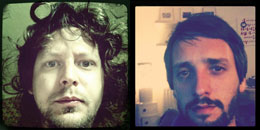 Tom Shrapnel & Cameron Lowe are the collaborative duo Duke and Duke. Tom is a Director and Cameron is an Animator/Motion Graphic Artist. Aeolian is their second film.
Tom Shrapnel & Cameron Lowe are the collaborative duo Duke and Duke. Tom is a Director and Cameron is an Animator/Motion Graphic Artist. Aeolian is their second film.
What made you make the film?
We wanted to expand on the live action/animation techniques we’d developed in a previous short we made called This Is J03. This Is J03 was set in a gritty urban environment so we were keen to do something in a more natural environment.
Is there something you can tell us about the production process?
Aeolian was made on zero budget and took 3 years to complete. The film was shot in East Anglia in the summer of 2009 with the animation and compositing taking place in our spare time over the course of the next few years.
Where do you get your ideas from?
Coming from different backgrounds, Tom from live action and Cameron from animation, our influences and inspirations often vary which can lead us to interesting fusions of ideas. Aeolian came from a combination of Tom’s love of the films of Terence Malik and Cameron’s love of the films of Hayao Miyazaki. We wanted to show the life cycle of a simple character as it grows and how the changing environment around it affects it’s understanding of the world.
What are you working on now or planning on working next?
We both work in commercials at the moment but are hoping to collaborate on another project in the coming year.
Ainslie Henderson – I am Tom Moody
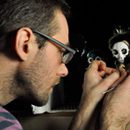 Ainslie Henderson is an animator, writer, director, currently living and working in Edinburgh. Early in 2012 he was awarded a BAFTA for his co-writing of The Making of Longbird with director Will Anderson. He and Will are the creative team behind White Robot. Ainslie’s latest film I Am Tom Moody has currently won over 25 international awards, including; Best British short at Encounters, Disney, best student film at Ottawa and the special jury prize at Annecy.
Ainslie Henderson is an animator, writer, director, currently living and working in Edinburgh. Early in 2012 he was awarded a BAFTA for his co-writing of The Making of Longbird with director Will Anderson. He and Will are the creative team behind White Robot. Ainslie’s latest film I Am Tom Moody has currently won over 25 international awards, including; Best British short at Encounters, Disney, best student film at Ottawa and the special jury prize at Annecy.
What made you make the film?
I made a previous film called ‘its about spending time together, it was a very personal story. I found being in a dark room for a long time, working out memories of my own, things that matter to me to be quite therapeutic. I wanted to make a film that would make me feel better somehow.
Is there something you can tell us about the production process?
One of my favourite moments was with Mackenzie and his son, Jude, recording voices for the final scene. We did it at home, in a kind of soundproofed tent made from a pile of mattresses and duvet covers, Mackenzie and Jude were huddled in there, holding a mic between them. It was very funny and sweet, I think it comes across in the recording.
Where do you get your ideas from?
I take my time, walk, think, wonder. I really need solitude and time, it comes from a sentiment, or from wanting to say something. The scene in Tom Moody where they go busking on Halloween, that actually happened to someone I know, the sense I got from that story stayed with me for a long time, it was a spark that much of the film grew from.
What are you working on now or planning on working next?
I’m just finishing another short film called Monkey Love Experiments about a Laboratory monkey who believes he’s being trained to go to the moon. I’m excited about sharing that.
Daniela Sherer – The Shirley Temple
 Daniela Sherer is a 2D indie animator and illustrator from Tel Aviv, Israel. In 2009 she graduated from the University of Southern California, Los Angeles with a BA in Animation and Digital Arts. In 2013 she finished her MA in animation at the Royal College of Art, London. Having worked on many projects ranging from documentaries to short films and visual music pieces she loves collaborating with other artists from multi-disciplinary backgrounds.
Daniela Sherer is a 2D indie animator and illustrator from Tel Aviv, Israel. In 2009 she graduated from the University of Southern California, Los Angeles with a BA in Animation and Digital Arts. In 2013 she finished her MA in animation at the Royal College of Art, London. Having worked on many projects ranging from documentaries to short films and visual music pieces she loves collaborating with other artists from multi-disciplinary backgrounds.
What made you make the film?
After making some experimental short visual music pieces, I started to notice how even extremely minimalist graphics can effectively and evocatively tell a story. I then began to think up ways in which I could animate a narrative with even more abstraction to it. I wanted to have the movement and transitions themselves contribute to how one reads the scenes. At the same time, I became inspired by several short stories which were published in the New Yorker, and reworked some of the themes I found there to create a coming of age story out of animated shapes and symbols.
Is there something you can tell us about the production process?
The production process was a bit different from the ones I’ve experienced so far. It’s an experimental film, and so I needed to change the order in which I usually work. Instead of simply storyboard to animation, I relied much more on getting the movements to feel right and tell the story in a more abstract way.
Where do you get your ideas from?
It sounds like a cliché (so apologies), but I honestly think ideas are everywhere, so I try to pay attention. You often find them in a good read, art, news items, music, personal experiences, sensations…but also in very random daily observations. I collect eclectic ideas in my sketchbooks as a hobby.
What are you working on now or planning on working next?
Right now I’m working as a freelancer while developing my next personal animation projects. I’ve been making a character animation short for a HarvardX neuroscience MOOC (a massive online open course,) and illustrating a novel, which will be published this January in Israel. Next up I’ll be animating a music video for a London based musician.
Sue Magoo – Moon River
 Sue Magoo is based in London and has been working in animation since 2008. (S)he does enough commercial directing and freelance animation to allow free time to experiment with his/her own work – mostly animations that straddle the worlds of digital art and animation. His/her last two films have been shown on Channel 4 and exhibited in galleries and festivals around the world.
Sue Magoo is based in London and has been working in animation since 2008. (S)he does enough commercial directing and freelance animation to allow free time to experiment with his/her own work – mostly animations that straddle the worlds of digital art and animation. His/her last two films have been shown on Channel 4 and exhibited in galleries and festivals around the world.
What made you make the film?
The motion studio I was working at were pitching on an ‘MTV goes to Ibiza’ job and having never been to Ibiza, Moon River is what came to mind. I worked up a frame or two and showed them to my boss who thought I was mad or depressed. Which was fair enough as it did look like the worst holiday you could ever go on.
Is there something you can tell us about the production process?
I splurged the script in about 3 hours, expecting that I would whack out the animation in a few weeks. It took about 85 times longer than I thought, but I really got sucked into the drab world of Moon River and spent ages doing set designs for scenes that never made the cut.
Where do you get your ideas from?
In the case of Moon River, I think I was trying to make an anti-Pixar film that wasn’t in any way heartwarming, cute or trite. It was quite a reactionary impulse, but it originates from my frustration with 3D animation being stuck in a very conventional rut. I didn’t want to make a family-oriented cartoon, a glossy car ad or a hyperreal exploding robot – I wanted to make an awkward little animation that strove to be neither attractive, spectacular or slick and that embraced a certain native 3D ‘look’.
What are you working on now or planning on working next?
I made an art film about the end of the world in 2012, a weird comedy animation in 2013 and 2014 will be the year I make a factual piece about the future of the internet.
Louis Hudson – Don’t Fear Death
 Louis Hudson is a 2D animation director and co-founder of comedy film duo Dice Productions with Ian Ravenscroft. Having studied animation at Edinburgh College of Art he has created work for UK Film Council, Channel 4, BBC Comedy and Oxfam. His first funded short was All Consuming Love (Man in a Cat), starring Kevin Eldon and Josie Long.
Louis Hudson is a 2D animation director and co-founder of comedy film duo Dice Productions with Ian Ravenscroft. Having studied animation at Edinburgh College of Art he has created work for UK Film Council, Channel 4, BBC Comedy and Oxfam. His first funded short was All Consuming Love (Man in a Cat), starring Kevin Eldon and Josie Long.
What made you make the film?
Ian started with the title. We love finding the surreal in mundane things and making light of the morbid. But the singular twisted logic of the main character and the way his story is weaved into the plot of the film is what made it feel especially important to make.
Is there something you can tell us about the production process?
The animation was nearly all created in Flash with a mixture of symbol animation and frame-by-frame animation. This helped to create a clean, economical look which also left room for plenty of character animation. The bulk of the animation was created between me and two other animators through Dropbox. I believe there’s rarely such thing as an inbetween, particularly in fast comedy character animation, so I can be a bit OCD with detail in a scene. The tension in my animatic/thumbnail poses are pretty close to the finished thing. So for a film with this tight a budget, I usually clean those up into key poses and do any specific animation before passing them on with notes for the acting to reduce on corrections. Working purely online like that can be tricky but it’s great that we are now able to work with people who are just right anywhere in the world.
Where do you get your ideas from?
Ian is incredible at taking a basic idea and then running with it in an unexpected direction. For me, I love the unexplained logic of people and from the outside that makes their choices seem bizarre. I think both of our biggest sources of inspiration are from the more fringe (or lumpy) people we know and around our home of Birmingham.
What are you working on now or planning on working next?
We’re currently gearing up for another Random Acts film called Gregory Is A Dancer. It will be our first live action commission which is a bit scary. We’re also working up pitches for more animated films and TV based shows.
Ross Hogg – The Man Who Mistook His Wife For A Hat
 Ross Hogg is an animation filmmaker based in Glasgow, Scotland. Graduating from the Glasgow School of Art in June 2013 with a First Class Honours degree, and winner of the GSA Newbery Medal, Ross’ debut animated film The Man Who Mistook His Wife For A Hat (adapted from Oliver Sacks’ seminal work) had it’s world premiere at this years Edinburgh International Film Festival. His second animation, Spectators, completed in May 2013 had it’s world premiere at this years Ottawa International Film Festival.
Ross Hogg is an animation filmmaker based in Glasgow, Scotland. Graduating from the Glasgow School of Art in June 2013 with a First Class Honours degree, and winner of the GSA Newbery Medal, Ross’ debut animated film The Man Who Mistook His Wife For A Hat (adapted from Oliver Sacks’ seminal work) had it’s world premiere at this years Edinburgh International Film Festival. His second animation, Spectators, completed in May 2013 had it’s world premiere at this years Ottawa International Film Festival.
What made you make the film?
The Man Who Mistook His Wife For A Hat, written by Oliver Sacks, is such an insightful and thought provoking case study of the human mind that I felt it deserved to be adapted and relayed in a more visual and tactile way.
Is there something you can tell us about the production process?
The nature of production gave every frame a sense of transience. The previous frame had to be destroyed to make way for the next, reflecting the condition examined in Oliver Sacks’ writing.
Where do you get your ideas from?
My ideas come mainly from experience and observation. This can range from anything between responding to certain ideas or phrases from a book, to observing and capturing human behaviour in different social situations.
What are you working on now or planning on working next?
At the moment, I am working on a few projects – all of which are in their very early stages of development. One is a more abstract experiment using only a 16mm projector to generate a soundscape and another is an observational short film with the working title ‘Walk Cycle’.
Paul Bush – Lay Bare
 Paul Bush was born in 1956 in London and studied Fine Art at Goldsmiths College. He became involved in the London Film-makers Co-op in the 1980s and thereafter has been producing experimental films that have been shown worldwide. His films cross the boundaries between documentary, fiction and animation and have been shown in art galleries and as installations as well as conventional cinemas. He has won numerous awards and his work is owned in public collections all over the world. In the 1990’s much of his work was co-commissioned by Channel 4 and the Arts Council. In 2001 he received a Nesta Fellowship. Since then he has mainly subsidised his work by teaching – at the National Film and Television school in the UK, Luzern University and Centro Sperimentali di Cinematografia in Italy. He regularly lectures and screens his work at art and film schools in Europe and the United States. Recently he has had retrospectives in Cracow, Tallinn, Tampere, Bogota, Ghent and at the National Cinema Museum, Turin.
Paul Bush was born in 1956 in London and studied Fine Art at Goldsmiths College. He became involved in the London Film-makers Co-op in the 1980s and thereafter has been producing experimental films that have been shown worldwide. His films cross the boundaries between documentary, fiction and animation and have been shown in art galleries and as installations as well as conventional cinemas. He has won numerous awards and his work is owned in public collections all over the world. In the 1990’s much of his work was co-commissioned by Channel 4 and the Arts Council. In 2001 he received a Nesta Fellowship. Since then he has mainly subsidised his work by teaching – at the National Film and Television school in the UK, Luzern University and Centro Sperimentali di Cinematografia in Italy. He regularly lectures and screens his work at art and film schools in Europe and the United States. Recently he has had retrospectives in Cracow, Tallinn, Tampere, Bogota, Ghent and at the National Cinema Museum, Turin.
What made you make the film?
Strangely the idea started from a commercial I made – usually it’s the other way round. Making the film coincided with being in love – a situation I hadn’t experienced for twenty years.
Is there something you can tell us about the production process?
The original plan was to make this with the National Film Board of Canada who came up with nearly two thirds of the money. Unfortunately after three years of trying I had to give up because I couldn’t find the balance in the UK. But meanwhile I had been taking photographs and making tests. Several years later I was waiting for the post-production on my feature film and had a lot of time on my hands. I had all these photographs of the body and half finished sequences so I decided to go ahead and finish the film on my own. In effect the production process lasted 6 years.
Where do you get your ideas from?
The ideas come from other ideas that come from other ideas and so on. I’m not sure where they all began. It was a long time ago. On the whole making things inspire more ideas, so the more I make the more I want to make.
What are you working on now or planning on working next?
I have just started a short animation based on museum collections which will be a Swiss UK co-production and this has been funded by the Arts Council of England. I am also developing two live action feature films.
Christian Schlaeffer – The Dewberry Empire
 Christian Schlaeffer grew up in Germany, where he stayed to study Communication-Design. He then left the European mainland to study for a Master’s degree in Animation on a nearby island. The central themes of his work are the structures around him, which evolve so slowly that it seems as if they had been like this forever, frozen in time or set in stone.
Christian Schlaeffer grew up in Germany, where he stayed to study Communication-Design. He then left the European mainland to study for a Master’s degree in Animation on a nearby island. The central themes of his work are the structures around him, which evolve so slowly that it seems as if they had been like this forever, frozen in time or set in stone.
What made you make the film?
The Dewberry Empire is my graduation film from the Royal College of Art, and as such the answer to the question of why I made this film is clear: I did it for the money.
Is there something you can tell us about the production process?
When I started the pre-production, it soon became clear that I could not get children to perform a script, while still getting the -in animation- unusual, realistic performance out of child-actors. To be precise, I didn’ t even want to use child actors, but rather see how far I could get with non-actor children. Thus, I started with a very rough script, an idea of a plot, and went into the sound recording, which we did outdoors, to see what would happen. The details of the plot were decided on after that, and only then could start making a storyboard and design everything etc. Weirdly, I think it is only thanks to this for my standards relatively uncertain production process, that the film turned out so close t what I had in mind when I came up with the concept.
Where do you get your ideas from?
It is a film about political structures, and as such it is inspired by man-made hierarchies, rooted in traditions that have long lost their meanings; social inertia, cargo cult politics and the question of whether dwarves really did start small.
What are you working on now or planning on working next?
To be able to afford having studied, I’m currently retraining as a cityboy. Less films, more bonuses!
Yibi Hu – Jammed
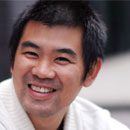 Yibi Hu is a visual artist, animator and filmmaker. He works on his own concepts and has created an exceptional portfolio of short films including A Friend I Know, KEG, A Day at Dunjanez, Josie’s Lalaland and Palingensia. Among these films many have won prestigious awards. His film KEG won a 2005 Adobe Design Achievement Award and Palingensia has won this year’s top prize at the iStock Future Now! Contest. In 2006 Yibi was invited to compete in Reelideastudio at the Cannes Film festival where he won Best in Show. His other works have been shown in numerous film festivals, such as Onedotzero, Bitfilm festival, Bristol International Short Film Festival, Sundance Festival and many others around the world.
Yibi Hu is a visual artist, animator and filmmaker. He works on his own concepts and has created an exceptional portfolio of short films including A Friend I Know, KEG, A Day at Dunjanez, Josie’s Lalaland and Palingensia. Among these films many have won prestigious awards. His film KEG won a 2005 Adobe Design Achievement Award and Palingensia has won this year’s top prize at the iStock Future Now! Contest. In 2006 Yibi was invited to compete in Reelideastudio at the Cannes Film festival where he won Best in Show. His other works have been shown in numerous film festivals, such as Onedotzero, Bitfilm festival, Bristol International Short Film Festival, Sundance Festival and many others around the world.
What made you make the film?
Lamenting the demise of the audio cassette, we thought it would be nice to try and find a fitting tribute to it’s faded glory. Jammed is the story of a bold, heroic, Viewmaster robot, venturing into an unknown world to save an unknown soul. We had great fun making this short film, using a mixture of stop motion and 3D techniques.
Is there something you can tell us about the production process?
Our style was influenced by the need to find a balance between the shiny, fragile tape and the hard, plastic, retro objects. The Viewmaster head of our robot was a nice way of creating a fun and warm character, as well as paying homage to a by-gone era. The cassette itself had to feel helpless and out of control. We were also keen to create a comforting, warm, magic hour feel.
Where do you get your ideas from?
This film was made with a mixture of stop motion and 3D techniques. Cassette tape spool is very fragile and therefore difficult to handle. We created our own specific rig to manage it, making things much easier. Even the little mistakes we made, ended up adding to the film. The robot, the tape and the clouds were all made in Cinema 4D. What we love most about this film is the combination of the two techniques and how they marry so well.
Christine Hooper – On Loop
 Christine Hooper spent her childhood years creating minuscule fimo sculptures and honing her skills as a puppeteer incase Jim Henson came knocking. Sadly, he didn’t. After studying Graphic Arts and Design at Leeds Met University she went onto work within post production. Returning from a stint of world travel she then settled in London where she tried her hand at documentary television before moving onto the MA Animation Course at Royal College of Art, which she completed in June 2013. She has had her work broadcast on SkyArts, E4 & the BBC and recently won the Conran Foundation Award.
Christine Hooper spent her childhood years creating minuscule fimo sculptures and honing her skills as a puppeteer incase Jim Henson came knocking. Sadly, he didn’t. After studying Graphic Arts and Design at Leeds Met University she went onto work within post production. Returning from a stint of world travel she then settled in London where she tried her hand at documentary television before moving onto the MA Animation Course at Royal College of Art, which she completed in June 2013. She has had her work broadcast on SkyArts, E4 & the BBC and recently won the Conran Foundation Award.
What made you make the film?
My film started life when I came across an interesting quote from Bill Nichols; ‘Every film is a documentary’. He argues that every film, even the most whimsical of fictions, gives evidence of it’s director. From the culture they were brought up in to their personal experiences, it is played out within their work. So I decided to make a film drawing on my personal experiences – to give a feel of authenticity but not be restrained by the documentary format. One thing I had a lot of experience of was insomnia, so I chose that as the theme.
Is there something you can tell us about the production process?
It took a long time! I consumed my body weight in chocolate brioche, got through two glue guns and spent the majority of a year cooped up in a dank basement at the Royal College of Art within a bedroom set, lit to feel like 4 o’clock in the morning.
Where do you get your ideas from?
Everywhere and anywhere. On Loop was definitely influenced by my previous years binge listening to ‘This American Life’, an American radio show which covers a different theme each week.
What are you working on now or planning on working next?
I am currently working with Ragdoll on an exciting new programme they are creating for BBC.
Chris Shepherd – Anatole’s Island
 Chris Shepherd is a multi award winning director, writer and producer. From his award winning directorial debut for Channel 4 in 1997 with The Broken Jaw, Chris has worked on many TV Shows and commercials including animation for Chris Morris’s Nathan Barley and classic World Stareout Championship sketches for BBC’s Big Train. His director/writer his credits include, a ten part series for Channel 4 called People’s Britain (2000 – BAA winner), acclaimed short Dad’s Dead (2003 – 25 awards including 2 BAA’s, BIFA and BAFTA nomination), comedy collaboration with David Shrigley Who I Am And What I Want (2005 BAA winner), Silence Is Golden (2006 TCM winner) and his latest BBC drama Bad Night for the Blues (2010). As well as curating and producing two seasons of animated films for Channel 4’s Random Acts, Chris’s latest work includes The Ringer and ACMS Presents: A Board Room.
Chris Shepherd is a multi award winning director, writer and producer. From his award winning directorial debut for Channel 4 in 1997 with The Broken Jaw, Chris has worked on many TV Shows and commercials including animation for Chris Morris’s Nathan Barley and classic World Stareout Championship sketches for BBC’s Big Train. His director/writer his credits include, a ten part series for Channel 4 called People’s Britain (2000 – BAA winner), acclaimed short Dad’s Dead (2003 – 25 awards including 2 BAA’s, BIFA and BAFTA nomination), comedy collaboration with David Shrigley Who I Am And What I Want (2005 BAA winner), Silence Is Golden (2006 TCM winner) and his latest BBC drama Bad Night for the Blues (2010). As well as curating and producing two seasons of animated films for Channel 4’s Random Acts, Chris’s latest work includes The Ringer and ACMS Presents: A Board Room.
What made you make the film?
Robert Popper showed me the script by Phil O’Shea and I fell in love with it. Then the brilliant Ruth Fielding come on board and helped us make the film. It reminded me of all of those great series that I grew up watching like Mr Benn, Ivor the Engine and the uber-moving The Clangers.
Is there something you can tell us about the production process?
Amer Nazri designed the wonderful characters and we animated it in After Effects mimicking the classic Postage cutout style. It’s centered around a great performance by Peter Serafinowicz.
Where do you get your ideas from?
Anatole is from the mind of Phil O’Shea. Myself, I draw upon anything that’s going for an idea. Small or big. You name it.
What are you working on now or planning on working next?
I’ve just directed a series of comedy blaps! for Channel 4 called ACMS Presents: A Board Room which go on air in October and my new film The Ringer premieres at the London Film Festival.
Elizabeth Hobbs – Imperial Provisor Frombald
 Elizabeth Hobbs is an independent animator working in East London under the name Spellbound Animations. Her short films have been screened widely internationally and won many awards. They include The Emperor (2001), The Witches (2002), The True Story of Sawney Beane (2005) and The Old, Old, Very Old Man (2007). Elizabeth also runs animation workshops in museums and galleries and lectures at Anglia Ruskin University in Cambridge.
Elizabeth Hobbs is an independent animator working in East London under the name Spellbound Animations. Her short films have been screened widely internationally and won many awards. They include The Emperor (2001), The Witches (2002), The True Story of Sawney Beane (2005) and The Old, Old, Very Old Man (2007). Elizabeth also runs animation workshops in museums and galleries and lectures at Anglia Ruskin University in Cambridge.
What made you make the film?
I read the testimony written by Imperial Provisor Frombald documenting his trip to Kisilova whilst I was artist in residence for the Tricky Women Film Festival in 2009. It was a story that I really wanted to tell using animation. I love the vitality of the animated prints on 35mm film and the necessary economy of working on a very small scale.
Is there something you can tell us about the production process?
I carved the images into small rubber stamps (2.5 x 1.5cm) and printed those onto 35mm film stock in little loops or sequences, I could review those on my Acmade Compeditor though in the end I scanned the images and compiled the animation digitally.
Where do you get your ideas from?
Usually archives or libraries.
What are you working on now or planning on working next?
I’m presently working on a film called Finding my Way made with young people in Foster Care in Cambridgeshire. I’ve also just finished Water Folk, a film about the movement of water dwelling creatures which was made in collaboration with a scientist Malcolm Burrows, so my partner on the project Emily Tracy and I are looking at ways to fund some more collaboration with him. I’d also like to make an animated thriller on 35mm. A little one.
Yousif Al-Khalifa – Sleeping With The Fishes
 Yousif Al-Khalifa is a graduate from the National Film and TV School. In 2012 Yousif won two professional pitches whilst studying; one for the BBC Open University’s Creative Climate competition and one for ourselves, LIAF, to make our 2012 trailer. The film screening here Sleeping With The Fishes is his graduate film.
Yousif Al-Khalifa is a graduate from the National Film and TV School. In 2012 Yousif won two professional pitches whilst studying; one for the BBC Open University’s Creative Climate competition and one for ourselves, LIAF, to make our 2012 trailer. The film screening here Sleeping With The Fishes is his graduate film.
What made you make the film?
The story’s theme of isolation and connecting with someone else really appealed to me. I also love fish!
Is there something you can tell us about the production process?
The film was made in the final year of my Masters at the NFTS. The school provided funding for assistants and equipment.
Where do you get your ideas from?
For this film in particular I worked with my writer, Sarah Woolner. We showed each other the films we love to give an idea of what we wanted. We had hundreds of great ideas, but always felt we could do better. With Sleeping With The Fishes, Sarah wrote a mini-treatment one night after talking to her about making a film simply about loneliness. We carried taking the story in many directions. The story then took a life of its own during the animatic, edited by the very gifted Johannes Bock. With my other films, ideas come from various places, but having a limitation always really helps, it’s very frustrating at first but equally as rewarding.
What are you working on now or planning on working next?
Currently I am in that same frustration phase, trying to come up with an adult animation series, it’s still very early but hoping that again the frustration will pay off.
Thanks to all the filmmakers who took the time to speak with us




